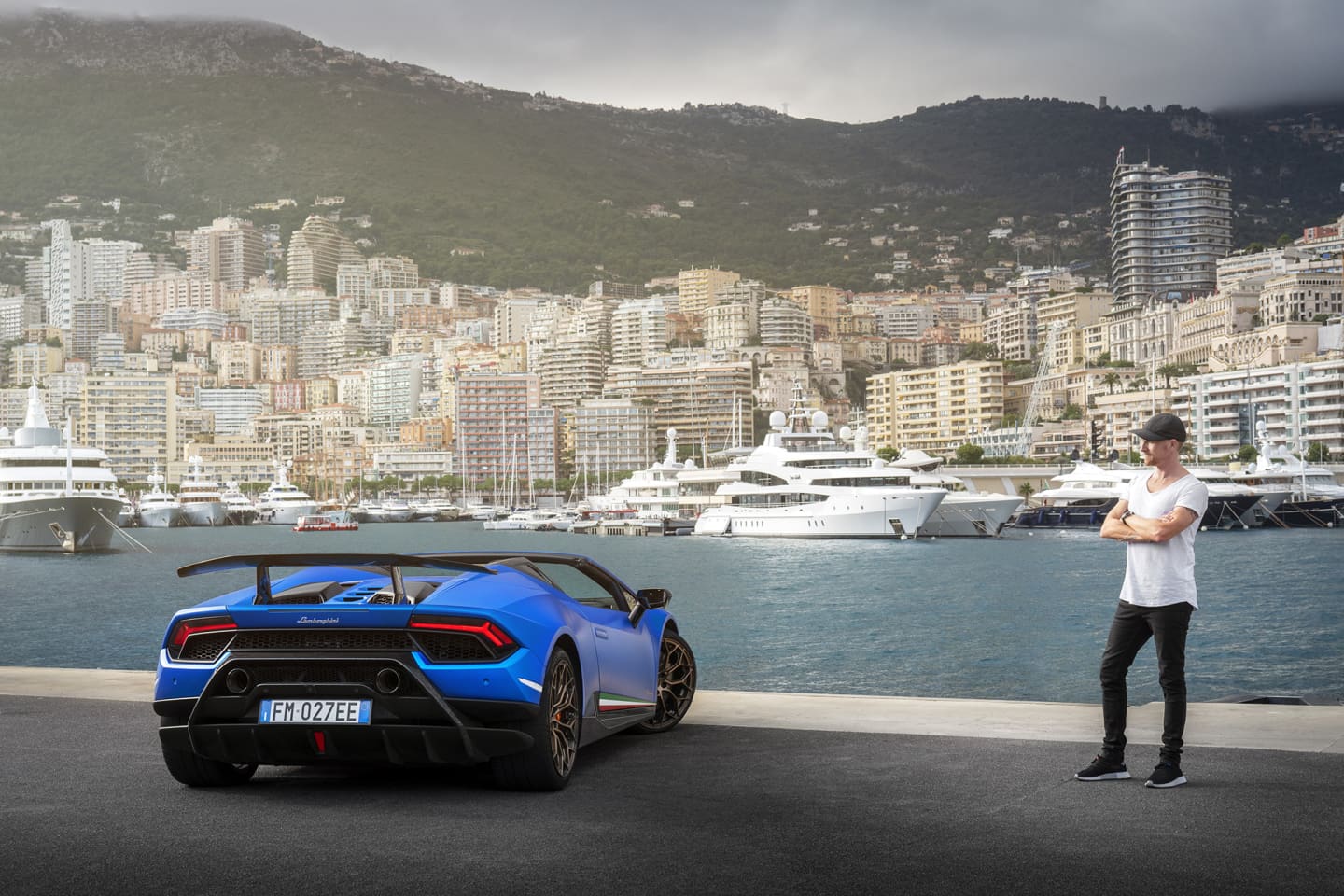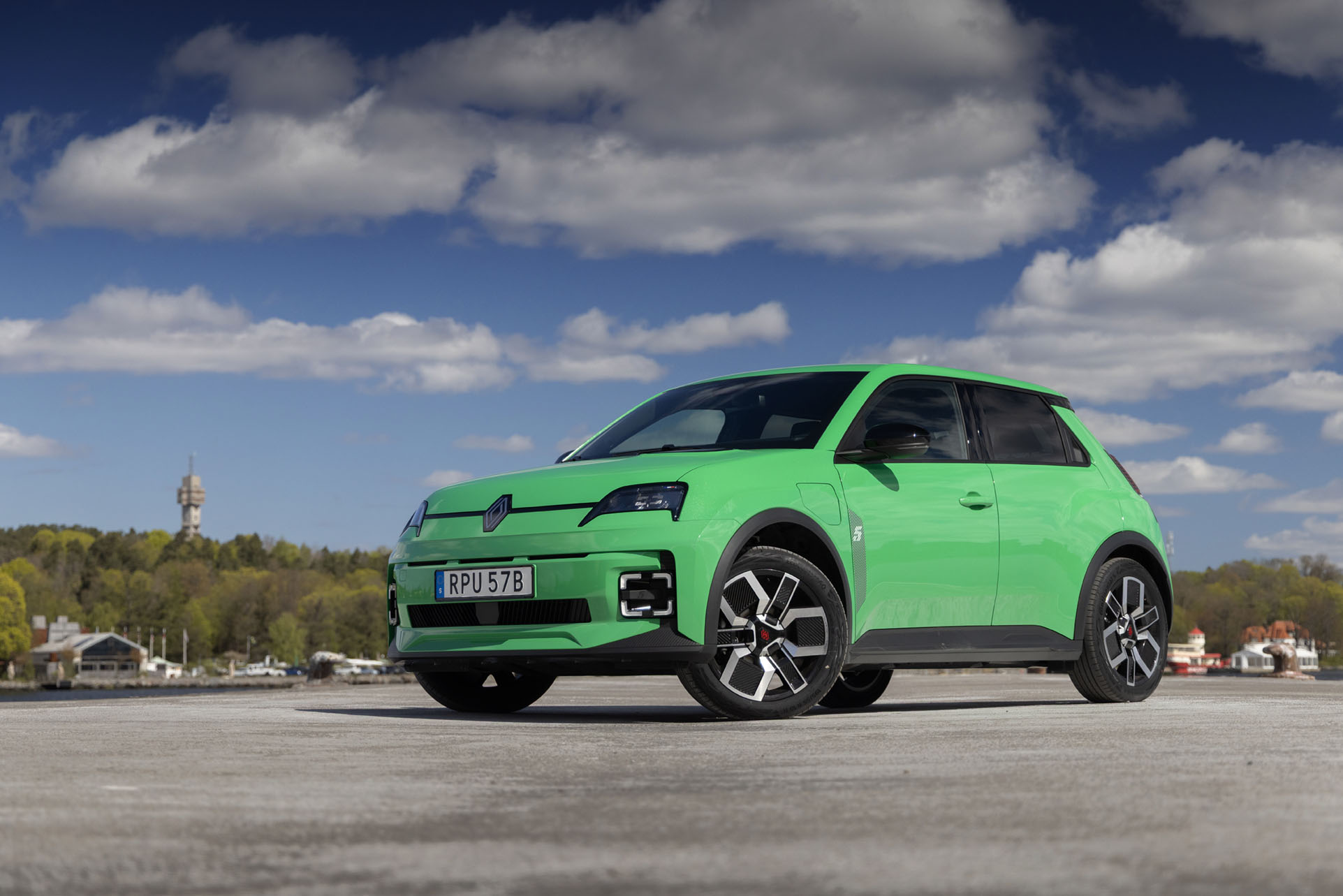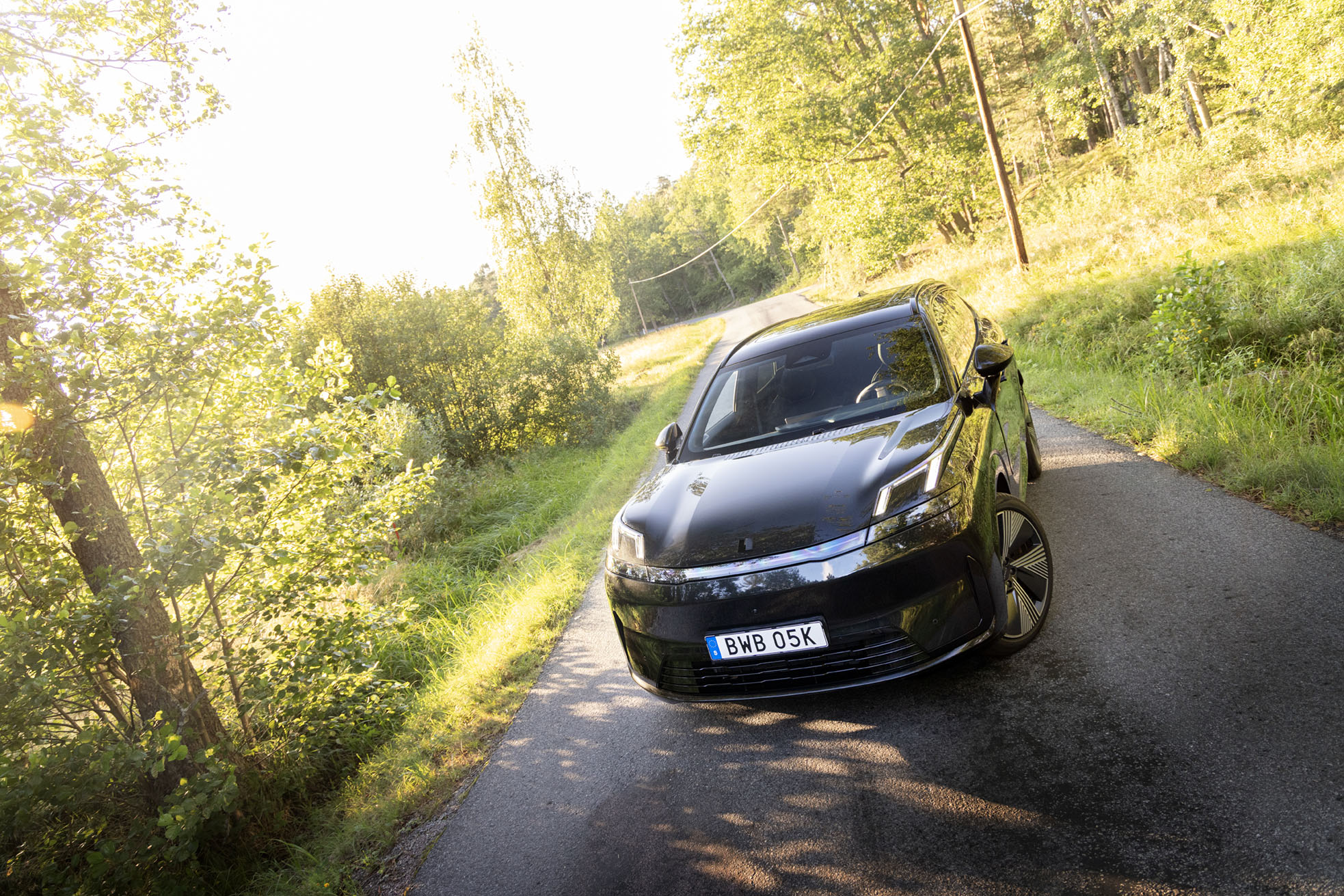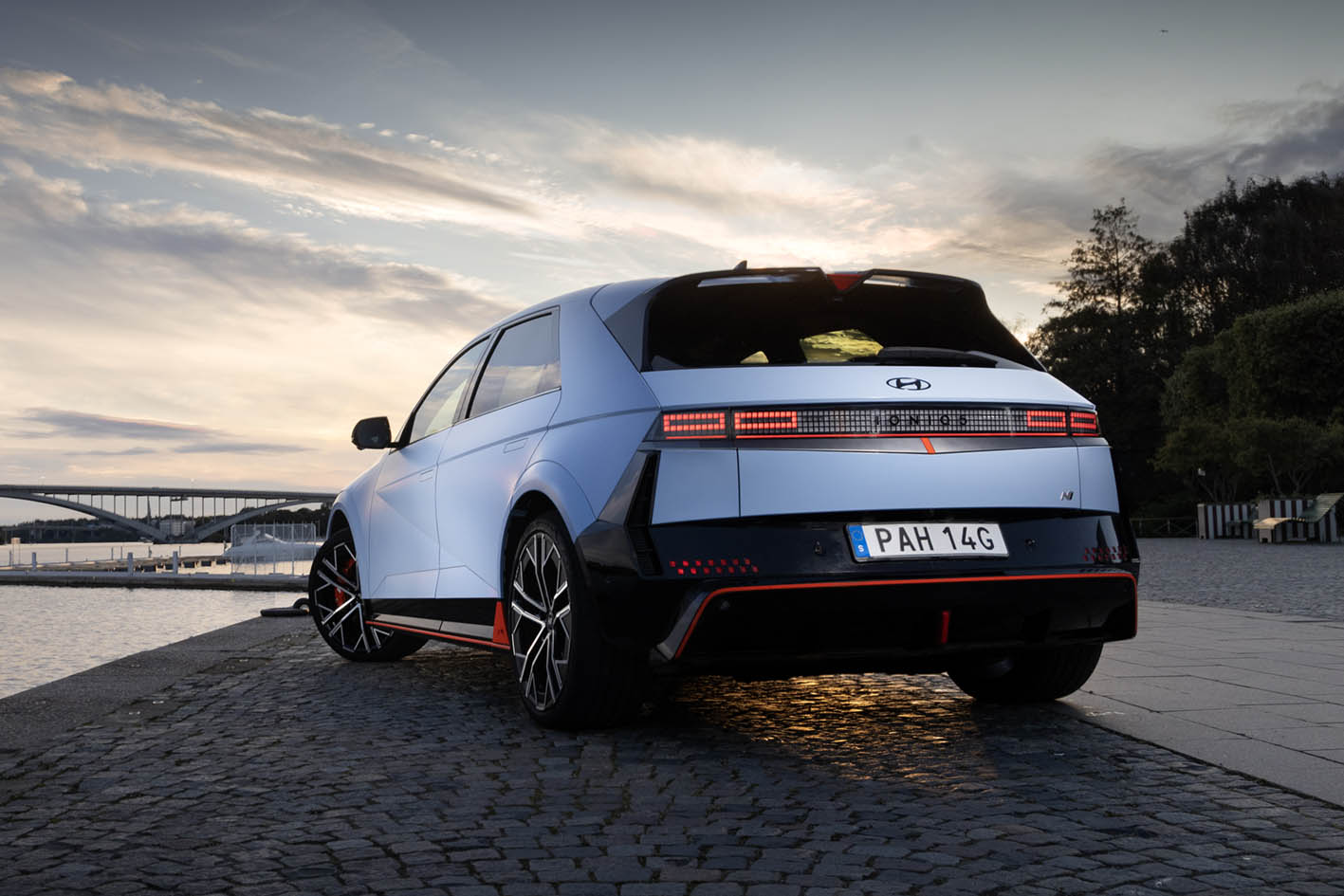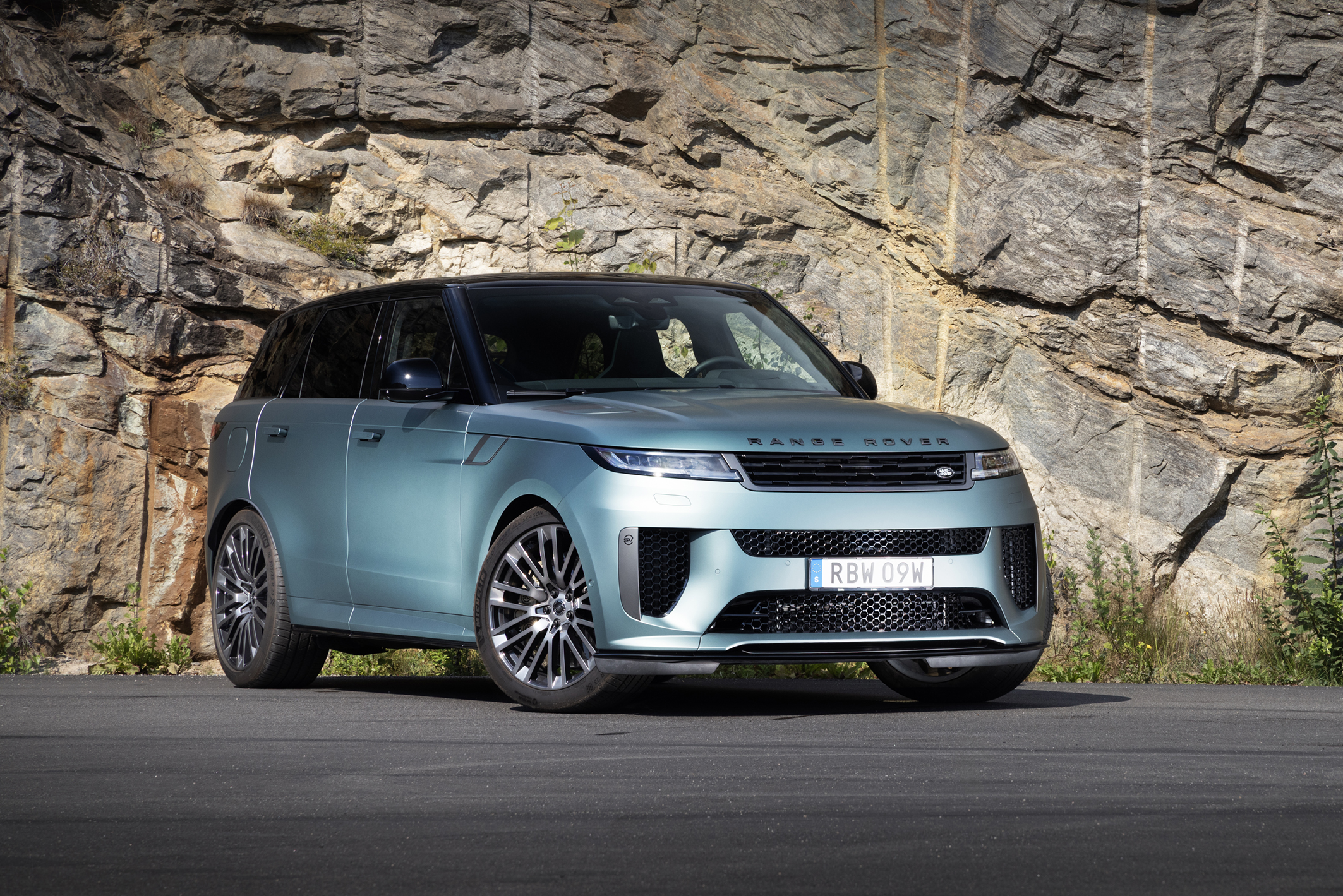The article was originally produced on February 11, 2019, some facts and prices may have changed since then.

Nowadays, Lamborghini offers this speedy bull in a roofless version and I took a trip to Monaco to experience this creation in full.
The battle for the highly sought-after lap record at the Nürburgring is a constant battle between car manufacturers. For a period, it was Lamborghini and their model Huracán Performante that held the record for standard production cars at 6 minutes and 52 seconds. Unfortunately, it was beaten by sister company Porsche and its model GT2 RS.
What Porsche, however, has not released, like Lamborghini, is a roofless version of the same model with which it set the record. The combination of the fantastic sounding V10 engine, performance and road holding together with a convertible is unbeatable. The matte deep blue introductory colour (Blu Aegeus) on the press car I borrowed from Lamborghini in Italy didn't make matters worse.

The Performante version was launched in 2017 as a track-prepared version of the Huracán
The history of Lamborghini is long and, as most people know, it "almost" began when the founder, Ferruccio Lamborghini, became dissatisfied with a Ferrari he had bought. Although before that he had made a fortune by starting to manufacture oil radiators, air conditioners and tractors (1949) which were in great demand in Italy during the economic boom that followed the Second World War. Enzo Ferrari dismissed the criticism so Ferruccio took matters into his own hands and had his own granturismo wagon constructed that met his demands for quality and detail work.
First model out in 1963 was the little-known 350GT, which had a 3.5-litre V12 engine designed by Giotto Bizzarrini, but the real success came in 1966 when the legendary Miura was launched, which had a transverse V12 mid-engine of 3,929 cc and 350/385 hp . 765 examples were built. Since then, Lamborghini has had a chequered history with a series of owners including Chrysler and Audi (read VW). But also iconic models such as Espada, Urraco, Countach, Diablo, LM002 and Murciellago.

The Huracán model took over from the successful Gallardo model that helped make Lamborghini the company it is today. Something that was largely, if not entirely, due to Audi coming in as a new owner in 1998. The first model after the takeover was the Gallardo, which was produced in a total of 14,000 copies. The Performante version was launched at the Geneva Motor Show in 2017 and then as a track-prepared version of the Huracán. More downforce thanks to the large carbon fibre rear wing, better air intake, a new exhaust system and lower weight are the things that above all make the Performante faster than the standard version.
But it is also a system that Lamborghini themselves named ALA, Aerodinamica Lamborghini Attiva, that makes a difference. The system means that the wing and the spoiler in the front are active and controlled via a computer for optimal aerodynamics and which makes the downforce more efficient. However, these figures change slightly with the roofless version. The 40 kilos that were lost from the regular Huracán have increased by 125 kilos due to the convertible top. Compared to the regular Spyder version of the Huracán, however, 35 kilos have been shaved off. This in turn has meant that the car completes the sprint from zero to one hundred in 3.1 seconds, which is two tenths longer than the coupe version of the Performante.

But these are numbers you have to live with if you want to be able to experience the sun without a roof. To do so, it only takes 15 seconds to lower the roof and it can be done at speeds of up to 50 kilometres per hour. However, the top speed of 325 km/h has not changed from the roofed version.

The pleasure of getting into the Huracán Performante Spyder, folding the roof and pressing the start button under the red flap in the centre console and hearing the V10 engine roar to life is total. Few engines if any convey such a deep and brutal pleasure as this one which without either turbo or supercharger generates 640 horses.
No one on the side of the road will stand unmoved when you pass and have the Sport or Corsa mode set because it makes so much noise and spits and slaps the exhaust system on downshifts in a fantastic way. Lamborghini has mostly produced four-wheel drive cars of its models. This in turn means that you have incredibly good control over the car in almost all situations. You don't have to be incredible for the car to oversteer as soon as you press the gas a little too hard, even when the anti-skid system is set to sport mode. Of course, it allows a bit of tail-waving, but the drive on the front wheels helps to keep the car on the road
At higher speeds, you can clearly see how stable the car is. The gearbox is a seven-speed dual-clutch box and the changes can be managed either fully automatically or via the large paddles in carbon fibre behind the steering wheel. Every time we downshift, the car automatically throttles so that the engine is at the right speed, at the same time as there is a bang in the exhaust system of unburnt fuel that ignites and becomes a bang. 'The gas is at the bottom again if the sound chamber is filled with an absolutely wonderful thundering roar from the engine as you approach the red mark at 8,500 rpm. All I can feel is total euphoria! How long we may have the joy of experiencing this I leave unsaid given the current circumstances surrounding internal combustion engines, but if there is one car to own before this era is over, it is a Lamborghini Huracán Performante Spyder!
Lamborghini Huracán Performante Spyder
| Basic price | From SEK 2.6 million |
| Engine | 5.2-litre V10, 640 hp. Torque 600 Nm |
| Transmission | Mid-engine, 7-speed automatic, dual clutch, four-wheel drive |
| Acceleration | 0-100 in 3.1 sec |
| Top speed | 325 km/h |
| Fuel consumption mixed driving according to the manufacturer | 1.42 l/mile |
| Weight | 1,507 kg |
| Guarantees | New car 3 years |
| Web | www.lamborghini.com |
